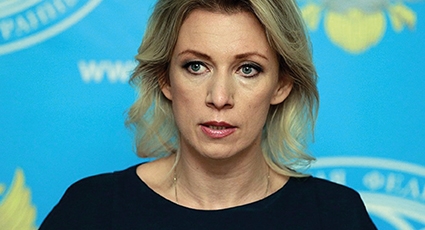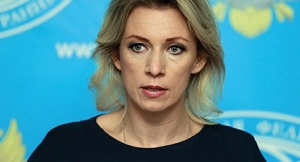Borderization a “Myth”, Says Russia
Russian Foreign Ministry Spokeswoman Maria Zakharova claimed that borderization in Georgia is a ‘myth’ in a news briefing on August 9, eleven years since the 2008 war between Georgia and Russia.
“An artificial frenzy over the alleged violations on the South Ossetian-Georgian border is once again being created. A myth is being spread on the shifting of the border by Russians and South Ossetians and their movement inside Georgian territory,” she said.
However so-called ‘creeping occupation’ and borderization are everyday realities as the de-facto border is moved further into Georgian territory.
“The increased fencing along the administrative boundary lines continued to adversely affect the rights of local residents, including the rights to work, food and an adequate standard of living, owing to the loss of access to their orchards, pasture and farmland,” reads a report by Amnesty International.
The borderization of Georgian territory began on August 2, 2009, when Russian troops reportedly shifted the South Ossetian de-facto border approximately 500 meters into the Georgian-controlled Kveshi village.
By the end of 2013, occupational forces had built an estimated 40 kilometers of border, with surveillance cameras and 19 border guard bases. The de-facto border’s construction separated and even swallowed numerous villages such as Ditsi, Divani, and Adzvi.
Village residents lost gardens, farmland, cemeteries and their ancestral homes, facing arrest if they crossed the so-called border. Occupational forces arrest hundreds of Georgians every year for going too close to the border.
Prior to Zakharova’s comments, the Georgian Foreign Ministry had reported that occupational forces had continued the borderization process by erecting a border in Gugutiantkari village in Gori Municipality.
“Border arrangements are carried out as planned by South Ossetia and are designed to create conditions for the safe and conflict-free life of the population of the two neighboring countries,” stated Zakharova. “Such measures are primarily aimed at eliminating the many incidents linked with the unintentional violations of the border,” she said.
Borderization is concerning as the South Ossetian border runs close to vital Georgian infrastructure. The de-factor border is just a few kilometers from the Russian Military Highway, a vital trade road, and from the Tbilisi-Senaki-Leselidze Highway which connects the East and West of the country.
Additionally, the so-called border is found 1.5 kilometers from the Baku-Supsia oil pipeline. Borderization could, therefore, place a section of the pipeline under occupational forces’ control.
In the past, Russian authorities have claimed that they are only marking the “true territorial boundaries in line with maps from the Soviet-era.”
Zakharova claimed that the border aims to create “comprehensive and predictable conditions” for those living on both sides of the border, whilst blaming Georgian and Western politicians and media for playing the ‘borderization card.’
However, international communities condemn Russia’s violent encroachment on Georgia’s territory and sovereignty. Following the 2008 conflict, the European Union also sent an unarmed civilian monitoring mission - EUMM - to observe the border situation on the ground.
Only Russia, Nicaragua, Venezuela, Nauru and Syria recognize Abkhazia and South Ossetia as independent states.
By Amy Jones












